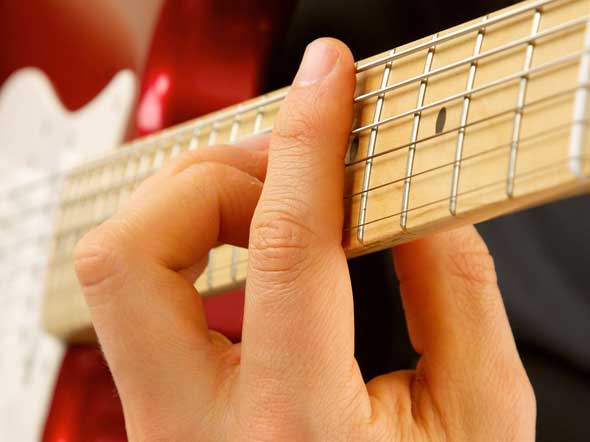
Staccato Strum
The staccato strum is another strumming technique used in Country. This technique involves releasing the pressure in the left hand immediately after the chord has been strummed. If executed correctly, the sound of the chord will be heard only for a split second, before being silenced by the release of the pressure in the left hand.
A dot placed above the strumming arrow indicates when a staccato strum is to be used. A root 6 major 6th bar chord is used for this example, F6 (1st fret).

Release pressure in left hand immediately after chord has been strummed.
Rhythm Pattern


Try applying the staccato strum to the following chord progression which features major 6th bar chords in both the root 6 and root 5 positions.
Rhythm Pattern


Suspended Bar Chords
Suspended bar chords are based upon the basic Esus and Asus chords.
Esus


Root 6

Asus


Root 5

Rhythm Pattern



Ninth Bar Chord
Another useful chord to use in Country is the ninth chord. The root 6 ninth bar chord is directly derived from the basic E9 chord. The root 5, however is based upon a variation of the basic A9 chord.
E9


Root 6

A9


Root 5

Example 65 is a Country Blues progression in the key of A. A staccato strum is used.
Rhythm Pattern



